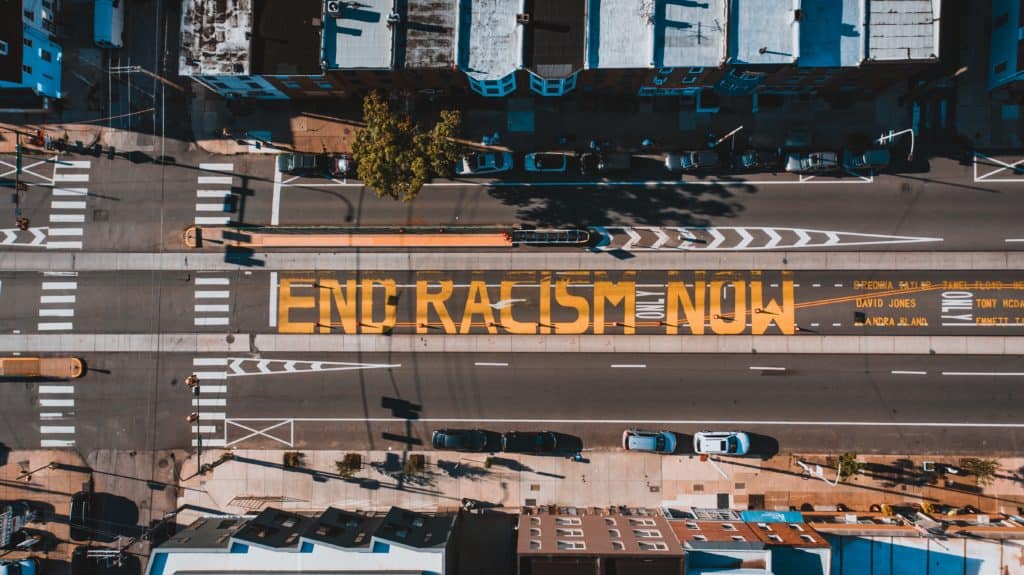 If you grew up in ’90s evangelicalism, like I did, there’s a good chance your parents either banned or were suspicious of the young wizard Harry Potter (while the “sorcery” in the Narnia and Lord of the Rings books was considered okay) without much investigation into why.
If you grew up in ’90s evangelicalism, like I did, there’s a good chance your parents either banned or were suspicious of the young wizard Harry Potter (while the “sorcery” in the Narnia and Lord of the Rings books was considered okay) without much investigation into why.
And, if you grew out of ‘90s evangelicalism, like I did, there’s a good chance you fell hard for Harry Potter later in life (i.e. college), and reminisced on how very silly your parents were for buying into the fear narratives and cultural battlegrounds of ’90s conservatism and all their “boogeymen.”
Talk about “cancel culture.”
Plenty is being cast in a suspicious light by conservative evangelicals today too. Even cancel culture has been canceled—without any hints of irony. This time, the boogeyman is Critical Race Theory (CRT).
Critical Race Theory
Critical Race Theory is not a worldview or religion, nor does it claim to have answers for everything. It is just one academic research lane, offering useful diagnoses, definitions, and solutions to institutional injustices, as they pertain to race.
CRT provides a language for exposing and making sense of racial disparities in areas like health and reproductive care, education, housing, generational wealth, incarceration, and law enforcement. CRT investigates how we might build a more just and equitable world by changing laws and policies, instead of blaming victims.
CRT, as an academic field that branched off from Critical Legal Studies, includes a wide range of thinkers and theorists, who do not all agree, and whose theories are always evolving with new information. Much as from the fields of philosophy, psychology, and history, Christians can glean important insights from CRT.
To dismiss the merits of CRT with a blanket negative label is not only to misconstrue the thing itself but also to create fear and confusion around it, and shut down critical conversations.
Yet, recently, Critical Race Theory has been cast in suspicious light or banned within evangelical circles—overwhelmingly by people who don’t know what it is—because some trusted persons within the scope of religious-political conservatism said it was “unbiblical,” “re-writing history,” a “liberal agenda,” “Marxist,” or some other scary-sounding label.
I’d like to say that this reflexive suspicion around CRT is very silly, much like the boycott of Harry Potter. But I think there’s more to it than that…
Who says?
I recently asked my dad why my sister and I weren’t allowed to watch Harry Potter movies growing up (since, today, my parents are big fans of the Wizarding World). With a shrug, he said that they must have “heard it was bad” from Focus on the Family—a trusted source for conservative Christian parenting at the time.
Did my parents read the Harry Potter books? Watch the movies? Look up interviews with J.K. Rowling about the Satanist literature she must have taken her spells from? Did they know any children who were becoming witches? No. They assumed their trusted source had done this investigative work.
I don’t blame them. Trust is a necessary and efficient shortcut that allows our brains to consume lots of information without needing to vet each individual piece. It’s an indispensable survival skill, especially for young parents!
Where this can go wrong, however, is when we trust people or sources implicitly, because we’ve been told they’re the “right” ones or because they’re familiar, without critically analyzing their biases, reliability, or contextual understanding. When we don’t do this analysis, we leave ourselves vulnerable to manipulation and misinformation—in the church and everywhere else!
Re-thinking our trusted sources is urgently needed in a world where racist and antisemitic extremism, like The Great Replacement conspiracy theory, is being peddled on popular social media platforms and cable news networks. We recently witnessed real-life consequences of this unchecked narrative: an anti-Black terrorist opening fire, murdering 10, at a grocery store.
It’s time for all of us to take responsibility for the voices we listen to, to ask of the “trusted sources” what makes them so trustworthy.
Why now?
CRT has been around for more than four decades, but the catchy acronym has only become known to the public (and turned “boogeyman”) in the last few years. Perhaps it’s because CRT’s exposure of racist laws and policies is now being felt and posing a threat to the status quo (a.k.a. white comfort). The resistance to CRT is overwhelmingly partisan and white, so it stands to reason that both the GOP and whiteness gain something from mass enlistment in this culture war.
People don’t go to war over theories, though, despite what they may say (I’m convinced of this, thanks to Clint Smith’s and Kristin Kobes Du Mez’s work). They go to war to preserve a sense of control and their own innocence—since the victor gets to write history.
The “Stupefy” effect
In the over-spiritual and reductionist worldview of many evangelicals, “guilty” is a label that gets pinned to something or projected onto someone else—a scapegoat—and cast out, for the absolution of the collective. Guilty is the one thing I know I can’t be, because “Jesus died for my sins.” Racism, then, is reserved for individual “bad apples” with hateful intentions. My good intentions as a “good person” mean I cannot be implicated.
Critical Race Theory suggests that personal responsibility extends beyond individual intentions–namely, to participation in harmful systems (and the impact of those systems)—and this doesn’t line up with what evangelicals want to believe about themselves. Therefore, it can’t be true. It must be “unbiblical.” It must be discredited, dismissed, and cast out as “dangerous.”
It’s a classic case of cognitive dissonance, defined by Dr. Barbara Shabazz as: “…the tension (dissonance) we feel when our attitudes, beliefs (cognitions), or behaviors don’t match our values. Because it’s difficult to deal with these inconsistencies, our instinct is to resolve them.”
In other words: cognitive dissonance has a stupefying effect.
If you are unfamiliar with Harry Potter vernacular, Stupefy is a spell that renders its targets stunned or unconscious. In a similar way, cognitive dissonance creates unpleasant mental distress—triggering fight or flight, blocking our access to rationality, and sending us grappling for relief. Logical fallacies, confirmation biases, and conspiracy theories are all too happy to offer such resolution, to feed us stories that maintain our innocence. But at what cost?
Had evangelicals not “canceled” Harry Potter in the ’90s, they might have learned a valuable lesson from the young wizard: how to return a stupefying spell with his signature “Expelliarmus” spell—a disarming one. They might have learned how to fight lies with truth, no matter how discomforting to their psyches or social spheres.
We can choose another way.
We can ask, “Who says?” and “Why now?”
We can stop using CRT as a scapegoat to circumvent America’s racialized history and Christian complicity in white supremacy culture.
We can take a step back, fill in some context, subject our ideologies to scrutiny, reallocate our trust according to higher standards, and—most important of all—take responsibility.
It’s not too late to learn from Harry.
 Felicia Melian is a seminary graduate, ordained minister, and ex-church planter turned writer, researcher, and aspiring public theologian. She specializes in interrogating the invisible, stagnant, and harmful ideas that exist among white evangelicals, especially those that stand in the way of justice.
Felicia Melian is a seminary graduate, ordained minister, and ex-church planter turned writer, researcher, and aspiring public theologian. She specializes in interrogating the invisible, stagnant, and harmful ideas that exist among white evangelicals, especially those that stand in the way of justice.


